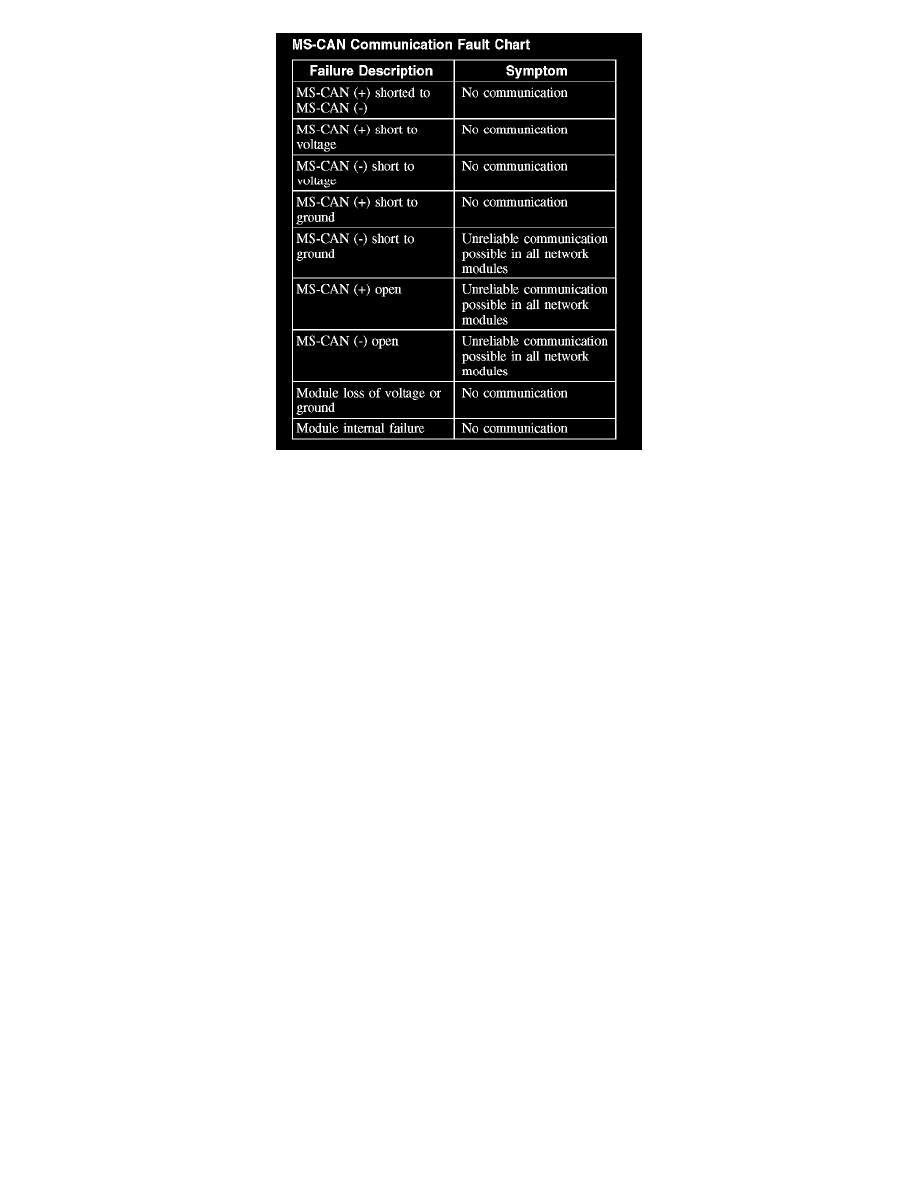Milan FWD L4-2.3L (2008)

MS-CAN Communication Fault Chart
HS-CAN
The HS-CAN is a high speed communication network that uses an unshielded twisted pair cable of data (+) and data (-) circuits. The data (+) and the
data (-) circuits are each regulated to approximately 2.5 volts during neutral or rested network traffic. As bus messages are sent on the data (+) circuit,
voltage is increased by approximately 1.0 volt. Inversely, the data (-) circuit is reduced by approximately 1.0 volt when a bus message is sent.
Multiple bus messages can be sent over the network CAN circuits allowing multiple modules to communicate with each other. The HS-CAN will not
communicate while certain faults are present, but will operate with diminished performance with other faults present.
The HS-CAN bus may remain operational when 1 of the 2 termination resistors are not present. The HS-CAN operates at a maximum data transfer
speed of 500 Kbps and is designed for real time information transfer and control. The network will remain operational, but at a degraded level when
certain circuit faults are present. The HS-CAN may remain operational with only one termination resistor present.
The following modules are on the HS-CAN:
-
ABS module
-
Accessory protocol interface module (APIM) (if equipped)
-
Instrument cluster (IC)
-
Occupant classification system module (OCSM)
-
PCM
-
Restraints control module (RCM)
-
Transmission control module (TCM)
-
4X4 control module (if equipped)
The following fault chart describes the specific HS-CAN failures and their resulting symptom:
